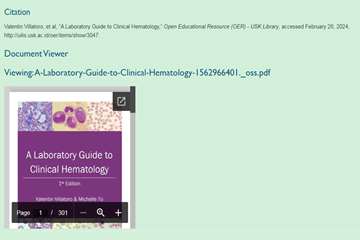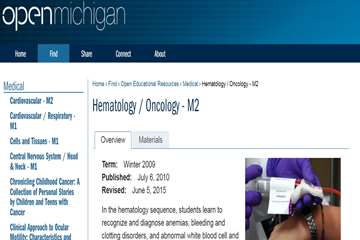Hematology

A Laboratory Guide to Clinical Hematology
This is eBook will be constantly updated, edited, and reviewed as new emerging information arises.
Clinical Hematology Atlas: A Pictorial Guide for the Hematology Laboratory (CC BY-NC-SA)
This atlas is designed to assist students taking Hematology courses learn to evaluate normal and abnormal blood cell morphology through microscopic examination of blood smears, and interpret results and correlate with other laboratory data to identify hematologic disorders.
Hematology / Oncology - M2 | Open Michigan
In the hematology sequence, students learn to recognize and diagnose anemias, bleeding and clotting disorders, and abnormal white blood cell and lymphocyte disorders. Students learn the clinical approach to a patient with a red blood cell, hemostatic or thrombotic, and white blood cell disorder.


